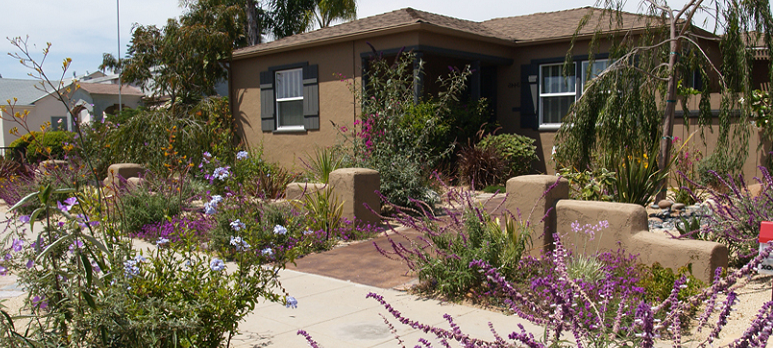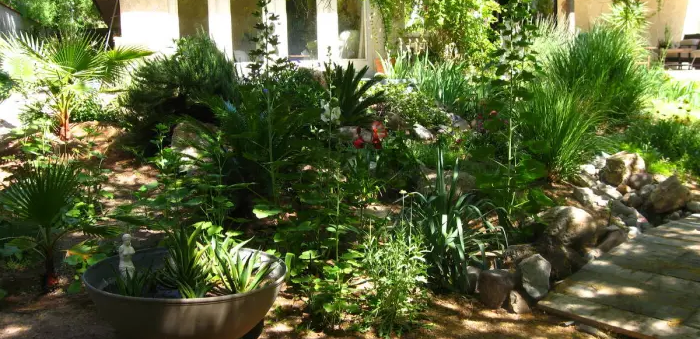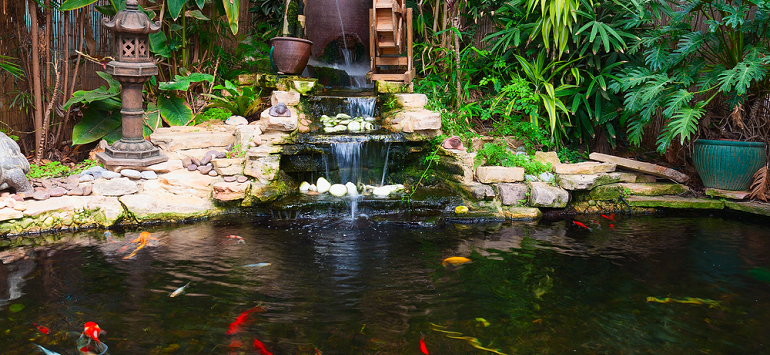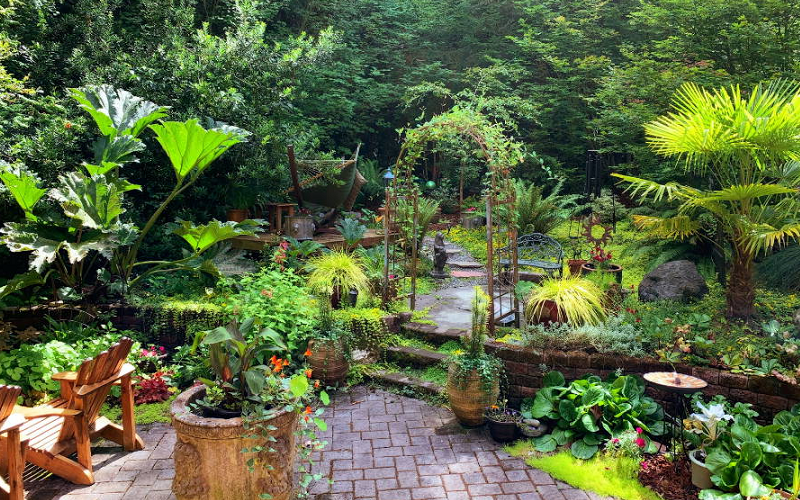Successful gardening requires a grasp of microclimate, regardless of your location. By gaining insight into the unique conditions of our own gardens, we can assess its strengths, weaknesses, opportunities, and challenges. This knowledge allows us to make improvements and reach desired outcomes.
What Is a Microclimate?
A microclimate is a small-scale climate system that exists within a specific geographic region, and can differ from the larger surrounding climate due to a range of environmental factors. These localized conditions can have a significant impact on the growth and survival of plants, animals, and other living organisms.
Some of the factors that can affect a microclimate include:
- Topography: The shape of the land, such as hills, valleys, and slopes, can affect air flow and sunlight exposure, leading to microclimate differences within a region.
- Vegetation: Trees and other forms of vegetation can provide shade, trap moisture, and modify wind patterns, creating microclimates within a larger region.
- Bodies of water: Large bodies of water can have a moderating effect on the surrounding climate, leading to differences in temperature, humidity, and air flow compared to nearby land-based regions.
- Human activities: Human activities such as urbanization and industrialization can cause localized changes in temperature, humidity, and wind patterns due to the presence of buildings, roads, and other infrastructure.

It’s good to understand microclimates because they can play a key role in the success or failure of gardening and other agricultural endeavors. For example, a microclimate that is protected from cold winds and receives adequate sunlight may be suitable for growing warm-weather crops, while a shadier, cooler microclimate may be better suited for growing cool-weather crops. Microclimates are complex and dynamic environmental systems that exist within larger regions, and a comprehensive understanding of these conditions is essential for successful gardening and agriculture.
What Is Meant By the Idea of a ‘Better’ Microclimate?
When referring to a “better” microclimate, it means that the atmospheric conditions in a specific area are more favorable for the growth and survival of plants and other living organisms. This can be determined by factors such as temperature, sunlight, humidity, water availability, and wind patterns.
A microclimate is considered “better” if it provides the appropriate conditions for the plants or organisms being grown. The specific conditions that make a microclimate “better” depend on the needs of the particular plants or organisms. For example, a microclimate that is suitable for growing tropical plants might not be ideal for growing cold-climate plants. A better microclimate might have the following characteristics:
- Appropriate temperature: A better microclimate would have temperatures that are suitable for the plants being grown, not too hot or too cold.
- Adequate sunlight: Plants need sunlight to photosynthesize and grow, so a better microclimate would have adequate light exposure.
- Proper humidity levels: Different plants have different humidity requirements, and a better microclimate would have humidity levels that are suitable for the plants being grown.
- Adequate water: A better microclimate would have consistent and adequate water availability, either through rainfall or irrigation.
- Proper wind patterns: Some plants may be susceptible to wind damage, and a better microclimate would have wind patterns that are not harmful to the plants.

How to Mitigate Microclimate Challenges
To address microclimate challenges, gardeners and farmers can implement a variety of strategies to improve the conditions for plant growth and survival. This can include selecting plants that are adapted to the specific microclimate, preparing the site for planting, using shading to protect plants from too much sunlight or heat, managing water efficiently, providing wind protection, using mulching to conserve soil moisture and regulate soil temperature, and manipulating the microclimate through techniques such as raised beds, greenhouses, or hoop houses.

By taking the following steps, gardeners and farmers can improve the conditions for their crops and help ensure their success. Note that it is important to keep in mind that microclimates can change over time and ongoing monitoring and adjustments may be necessary.
- Plant selection: Choosing plants that are adapted to the specific microclimate conditions can help ensure their survival and success.
- Site preparation: Proper site preparation, such as soil preparation, can help improve soil conditions and make them more suitable for plants.
- Use of shading: Providing shade for plants can help mitigate the effects of too much sunlight, wind, or heat. This can be achieved through the use of shade cloth, trees, or other structures.
- Water management: Proper water management, such as efficient irrigation systems, can help ensure that plants have adequate moisture and help mitigate the effects of drought.
- Wind protection: Windbreaks, such as fences or walls, can be used to protect plants from strong winds and help improve microclimate conditions.
- Mulching: Mulching can help conserve soil moisture and regulate soil temperature, improving the overall microclimate for plants.
- Microclimate manipulation: Techniques such as raised beds, greenhouses, and hoop houses can be used to create microclimates that are more favorable for plant growth and survival.
By implementing these strategies, gardeners and farmers can improve microclimate conditions and help ensure the success of their crops. However, it’s important to remember that microclimates can change over time and may require ongoing monitoring and adjustments.

